
I met Anja Uhren recently at an Easter egg painting event. She was casually painting a face on an off-cut of card and I was immediately impressed by the effortlessness with which she produced a strikingly unique portrait, straight out of her imagination. Later I looked up her work online, and was so impressed, not to say stunned, that I passed on a couple of links to Amazing Stories head honcho Steve Davidson asking if he would like an interview with her. Steve replied with an emphatic yes, describing Anja’s work as ‘fantastic’, with a ‘pretty unique’ style. Which, looking through the images which accompany this interview, I hope you will agree is absolutely true.
What is all the more remarkable is that Anja Uhren is still a student. Even so, she has already illustrated a vampire novel which was published in Germany last month. I love Anja’s beautiful Gothic-romantic-fantasy art and hope you will too. I see no reason why she shouldn’t go one to become one of the great names in fantasy art illustration. So without further ado, Amazing Stories is proud to present an interview with one of the future greats of fantasy art, Anja Uhren.
Gary Dalkin for Amazing Stories: Your style is already mature in that you have achieved something which eludes many otherwise talented artists, which is that you have your own recognisable, distinctive style. So how long have you been an artist and is your style something which has come naturally to you, or is it something you have consciously worked at, refined and developed? What are your influences, what artists or styles of art did you get excited and inspired by growing-up?
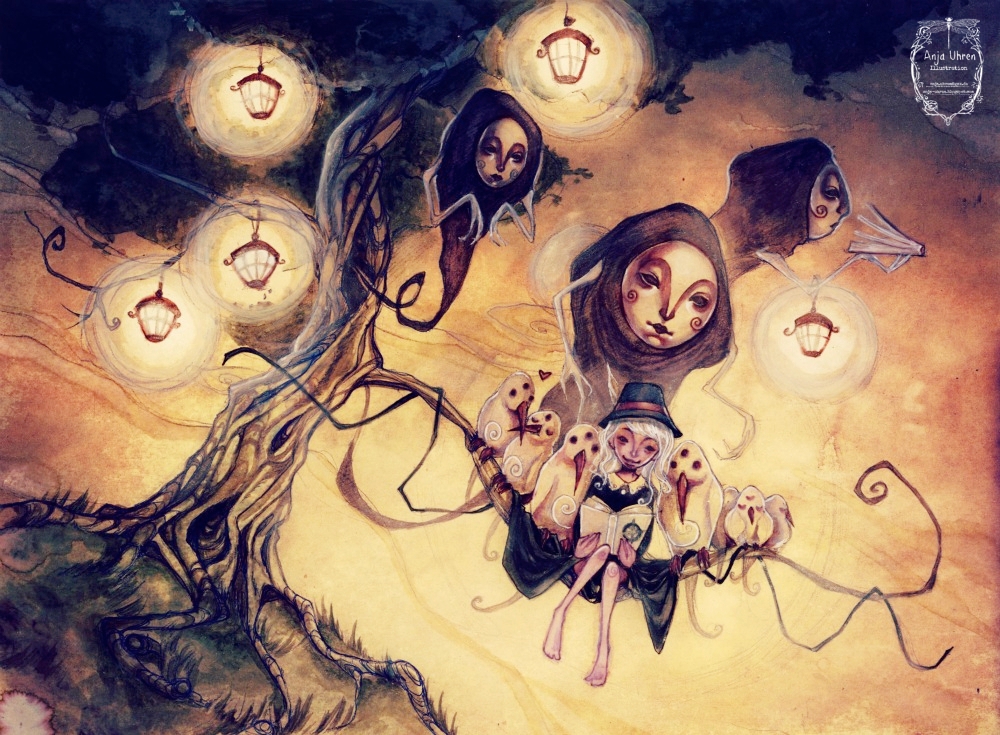
Anja Uhren: I think I have been calling myself an artist – or at least aiming to become one someday – from an very early age. Having had a great passion for books – especially fairy tales, I was intrigued by their illustrations even before I was able to read them and would spend hours just looking at those enchanting pictures. I grew up in a small German village where hardly anything happened, so storytelling and reading was an important and popular family activity in my childhood. I remember all too well the countless hours I spent with my siblings listening to my mother read us the most wonderful tales from all around the world.

The stories fired my imagination and the beautiful illustrations inspired me to get creative myself; that was when I decided that my aim had to be to become a storyteller and illustrator – a goal I am still pursuing today. Magical enchantments and sinister forests are a vital part of my illustration practise and I try to capture a certain gloomy atmosphere in my work which I fell in love with as a little girl reading the Brother Grimm’s collection of fairy tales.

The idea of developing an own style emerged when I became interested in Manga and graphic novels, and for the first time noticed how distinctively different were the approaches of certain artists to the direct fusion of word and image which is so apparent in those genres. The artists that really influenced my work, however, I didn’t discover before going to art school, something which broadened my horizon extensively. The illustrations of Arthur Rackham, Brian Froud and James Jean have had an enormous impact on my way of working, as have the graphic novels by Cyril Pedrosa and Dave McKean and the very versatile work of Shaun Tan and his unique approach to creating picture books.
I also draw a lot of inspiration from nature. The beautiful organic structures and textures heavily influence my use of line and there is hardly anything more relaxing for me than sitting outside, drawing trees.

ASM: I can certainly see a little of Arthur Rackham, Brian Froud and Dave McKean as influences in your work. I was immediately reminded of classic children’s book illustrations, but also of The Sandman. You are still studying, but there is a vampire novel coming out in Germany soon for which you have done the illustrations. Could you tell me about that? What’s it called… how did you get the job… and is there likely to be an English language edition?
AU: The novel is called Zarin der Vampire (Tsarina of the Vampires) by Tatana Fedorovna and it has just been published. It’s a gripping vampire novel combining some fantasy elements with historical facts regarding the assassination of the Tsar’s family in 1918. The author, who is Russian-German, contacted me via e-mail after having seen some of my illustrations online and asked whether I’d be interested in creating the cover art and eight interior illustrations for her novel.
It is the first time I’ve collaborated on a published project, which is why I am very excited and anxious to get my hands onto a printed copy! During the process I have gained important insights into today’s publishing world. Hopefully these will prove valuable for the future as I would like to do nothing better than to create illustrated books for a living. An English language edition is planned for the end of this year but there is no definite agreement yet.

ASM: Be sure to let us know when we can buy Zarin der Vampire in English. It sounds really interesting and your work on it is excellent. I hope they keep the same art when the novel is translated.
Now you are studying in England. I’m sure there are lots of places you could have chosen to study in Germany, so I’m wondering what was the particular attraction of England and Bournemouth University?

AU: From what I have read and been told the system of further education is quite different here than in Germany. Obviously I don’t have any direct comparison as I have never studied in Germany, but I simply wanted to see something of the world after leaving school and when I heard of the Arts University at Bournemouth I sort of fell in love with it from just looking at their homepage. England is such a wonderful and inspiring country and coming here was one of the best decisions I have made so far.
ASM: I won’t argue with that! You’ve mentioned being inspired by nature. Certainly your work inspired by Bournemouth’s main cemetery is particularly beautiful.
AU: I’m amazed what a ‘green town’ Bournemouth is, nature definitely is present everywhere and there are many inspirational places where I love to go and sketch – the main cemetery being one of them.

ASM: I notice people in your work tend to have very angular faces with very dark eyes. You use strong lines and really bold highlights which give your art a glow well suited to fantasy illustration. You tend towards muted, earthly colours, with lots of golden brown, autumnal sort of tones.
AU: That’s all very well observed. Especially the autumnal tones are very important to me, since autumn conveys a feeling of decay which is something I try to capture. Someone once told me, my paintings look like rotten flowers. I guess I am looking for beauty in bizarre places, resulting in curious aesthetics.


ASM: How would you define the elements which make up your style, and which particular techniques and mediums do you prefer to use?
AU: Watercolour has to be my favourite medium out there. It allows me to be very flexible and to integrate chance into the painting process. I rarely have a perfect vision of the painting in my head before I start creating it. I like scribbling around and then applying loose washes of colour all over the pencil sketches, sprinkling some salt onto them and leaving it to dry – watching how it all beautifully blurs and blends together and the salt grains create delicate crystal pattern and curious shapes. It’s those shapes and pattern that then give me a direction of where I should go with the painting and I start to apply more and more water colour washes, some outlines on top and eventually some highlights using white acrylic paint and a fine brush.

I also very much enjoy painting on unconventional surfaces like old book pages for example. The texture of this old paper often is just wonderful to work on and I like bits of words or written music shining through the final image, creating a layered and insubstantial effect which again suits my theme of decay.
ASM: So the inevitable question is, why is someone as young as you are so interested in decay?
AU: Even though I’m not completely sure myself where this fascination comes from, I think it is because decaying things usually have a life behind them that is coming to an end now and they are therefore surrounded by thousands of stories. Stories of belonging somewhere and to someone, stories of seeing and experiencing things no other would have experienced the same way, stories of failing and succeeding, stories of finding their place in and appreciation for life.
It’s those stories that give elderly people their omniscient aura, that let you see faces and all kind or strange things in the twisted bark and branches of an ancient tree and that gives junk stores and flea markets their special, intriguing charm. And it’s those stories that I’d like to capture and explore with my work – to ‘illustrate’ if you like.

ASM: With your deep interest in older things, your affinity for the organic and the natural, how do you feel about the electronic future of publishing? Will you be happy if you work were only to be available digitally, or will a physical book still be your ideal? I have the idea that in a decade or so the only new physical books will be beautifully made, illustrated limited editions of the sort some small presses are already making. Most books will probably be read on some sort of tablet, which will be much more advanced than the rather primitive devices we have now.
AU: You have raised an issue there that is bugging me for some time now. There is hardly anything more beautiful than a physical book. It’s not just about the written word or printed images in it, it’s again about the whole ‘life’ surrounding these objects. The traces of use, be it scribbled thoughts or doodles, the occasional coffee or tea stains, the certain smell, or simply a worn out book cover. All these things reveal so much about the person that keeps them and they easily evoke beloved memories that simply can’t be attached to any digital object, which is constantly changing and extending its content – its identity.

As useful as those e-readers might be, they will never even get close to what a ‘real’ book is all about and if your prediction is true – which seems very likely – I’d love to be one of these few people responsible for creating those limited edition books. I certainly will always belong to those people continuing to buy them.
ASM: I couldn’t agree more. I looking forward to owning the books you help create. Anja Uhren, thank you so much for talking to Amazing Stories.
*
You can see more, and buy some, of Anja Uhren’s art on her website.



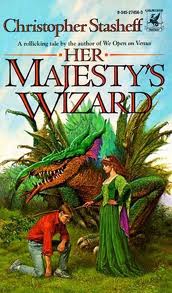
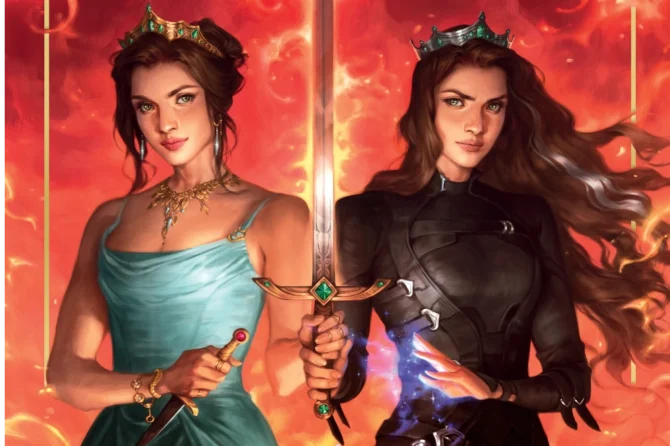

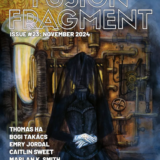

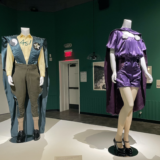


With her interest in the undead and striking Gothic style, surely it’s only a matter of time before Anja illustrates the work of the most famous ‘resident’ in a Bournemouth graveyard, Mary Shelley, author of Frankenstein.